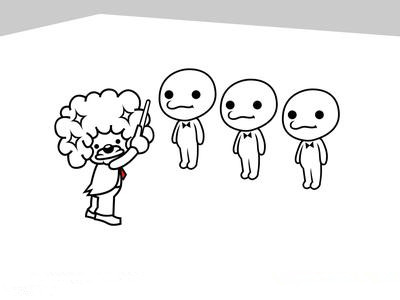That's a pre-school child beating a drum, in sync with an adult drummer. And here's a pre-schooler who can't find the rhythm.
這是一位學(xué)前兒童和一位成年鼓手在一起打鼓的聲音。下面是另一位學(xué)前兒童擊打出的鼓聲,他無法抓住節(jié)拍。
Researchers find that the first child, who can match the drum beat, is more likely to have better early language skills and reading potential. The study is in the Proceedings of the National Academy of Sciences.
科學(xué)家們發(fā)現(xiàn),第一位能跟上節(jié)拍的孩子,其早期語言技能和閱讀潛能可能更好。該研究發(fā)表在《美國國家科學(xué)學(xué)院院刊》上。

Rhythm is a key factor in communication. Speech rhythm provides important cues for meaning. Babies pick up rhythms, and we all use it to help identify syllables and words. An inability to properly process speech and sound—and rhythm—appears to be associated with reading problems.
節(jié)拍是交流的關(guān)鍵。言語節(jié)拍能為讀懂言語提供重要線索。嬰兒可以毫不費(fèi)力地學(xué)會節(jié)拍,我們都用節(jié)拍來辨析音節(jié)和單詞。不能恰當(dāng)?shù)靥幚碚Z音、聲音、及節(jié)拍——這和閱讀障礙有關(guān)。
In the study, scientists tested 35 children between three and four years old. An adult drummer beat a tempo meant to mimic the speed of speech. Twenty-two children could beat along; 13 could not.The children who kept the beat were faster at naming objects and colors, had superior short-term auditory memory, and were better at rhythm and melody discrimination. These skills all are related to language and reading.
在該研究中,科學(xué)家對35位年齡為3至4歲的兒童進(jìn)行了測試。實(shí)驗(yàn)中安排一位成年鼓手模仿語速進(jìn)行擊打。22位兒童能夠跟著鼓手進(jìn)行擊打;而另外13位則不能。那些能跟著節(jié)拍擊打的兒童能更快地說出目標(biāo)物的名稱和顏色,有更優(yōu)越的短暫聽覺記憶能力,而且更容易區(qū)分出節(jié)拍和節(jié)奏。這些技能均與言語和閱讀有關(guān)。
The researchers suggest that such a drumming test could identify children with early language and literacy challenges. And training could help the kids overcome those challenges—in part by learning to keep a beat.
科學(xué)家指出,該擊鼓測試可以辨別出哪些孩子具有早期語言技能和讀寫能力,哪些沒有。在一定程度上,通過訓(xùn)練——學(xué)習(xí)如何保持節(jié)拍,則能夠幫助這些孩子掌握上述技能。











